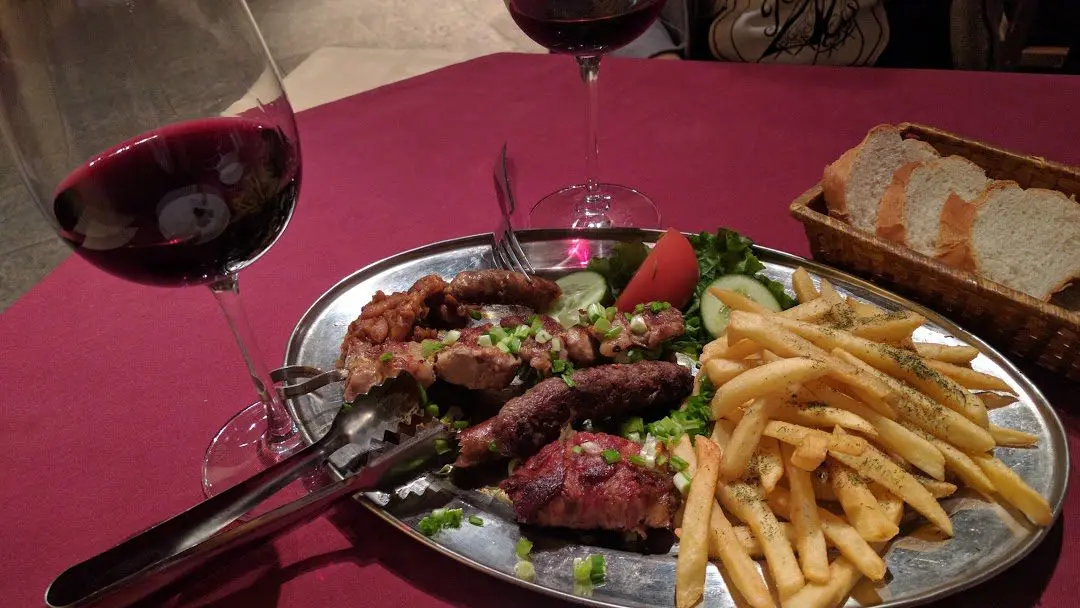Vranac is a Balkan dry wine made from the grape variety of the same name. Montenegro ranks first in terms of production of this type of wine; in the country, the name has been protected geographically since 1977. Vranac grapes are grown in North Macedonia, Bosnia and Herzegovina, as well as in the southern part of Croatia, where it is used to make blended wines. The taste of Vranac depends on the aging time. Young wines are distinguished by a bright purple color and high acidity, mature ones are characterized by a ruby hue and a rich bouquet with notes of chocolate, cinnamon and oak.
Characteristics of Vranac grapes
Montenegro is considered the birthplace of the Vranac grape. The name translates as “black stallion”, and Balkan winemakers joke that growing a good crop of this variety is no easier than taming a wild horse. The shoots grow quickly, which spoils the quality of the grapes, so farmers have to constantly cut the vines. Vranac is resistant to diseases, gives good yields and in Montenegro it occupies up to half of the entire planting area. Clusters of small size with large dark-skinned berries fully ripen by early autumn. The grapes are harvested by hand, starting in mid-September.
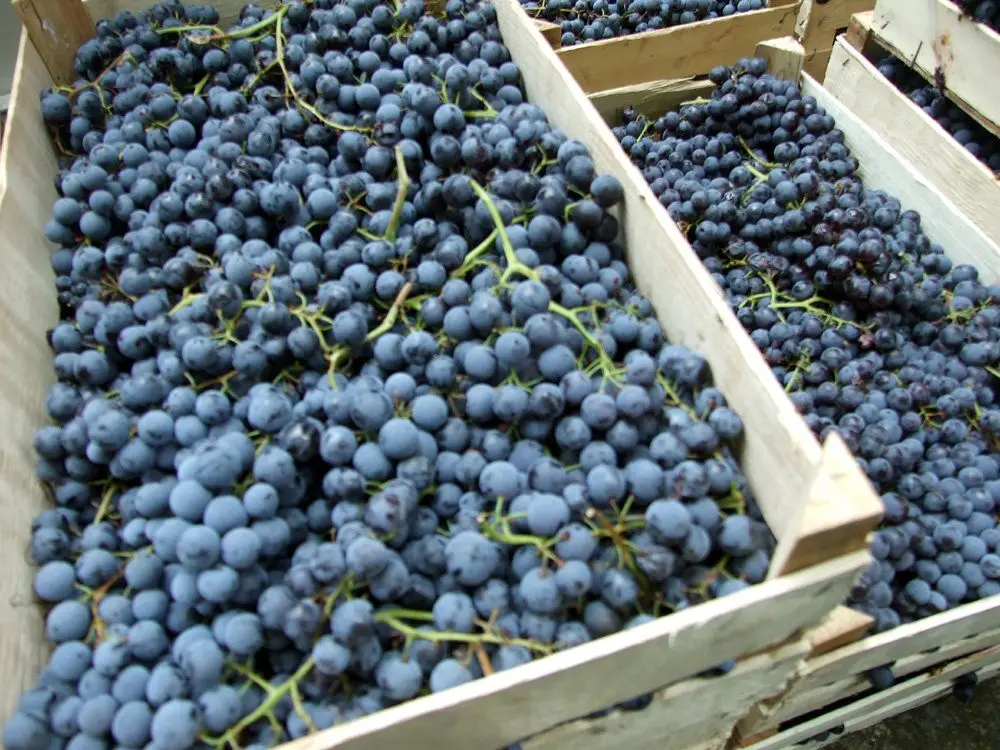
The variety is grown in large volumes in Macedonia and Serbia, where it serves as a raw material for the production of budget wines. The taste of the berries depends on the climate of the region – in warm and dry areas, the acidity of the grapes decreases. Favorable conditions in the Montenegrin vineyards of Kemevsky Pole give high quality crops, which are then used to produce premium wines. At the same time, not too high-quality brands are often found among Vranac varieties, designed for an undemanding consumer.
There are two styles of Vranac made in the Balkans. Wines with high extraction and rich fruity-spicy taste are common in North Macedonia and Eastern Herzegovina. Wineries in Montenegro produce products with a fresh berry bouquet and pronounced acidity. The best quality harvests with high sugar content in berries are used to produce long-aged wines. In the process of maturation in barrels, the drinks are saturated with vanilla, chocolate and spicy tones.
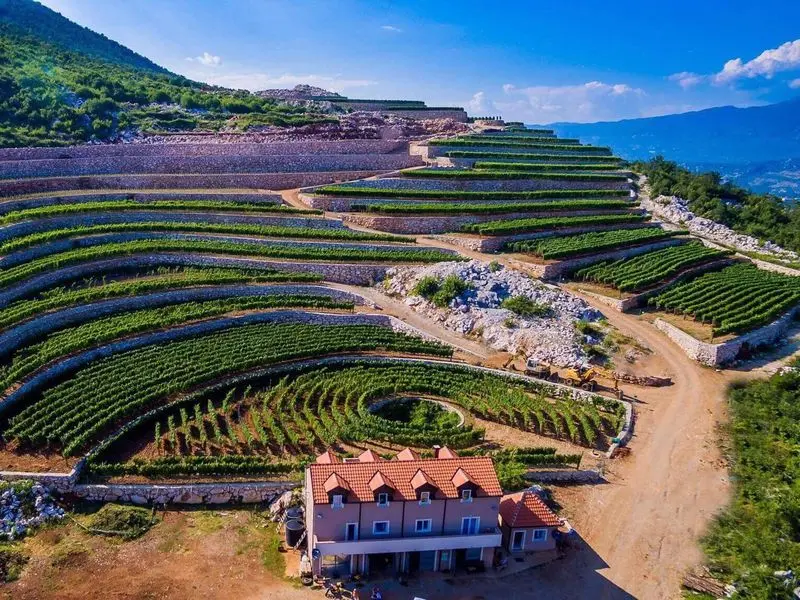
Production technology
Harvesting in some areas may continue until the end of October. Quality wines are obtained only from intact grapes, so the clusters are removed very carefully, and the berries are carefully sorted before processing. Primary fermentation lasts ten days and takes place at a temperature of 25 ° C. This is followed by maceration, which takes the same amount of time. After that, the wort is filtered and placed for aging in wooden barrels or stainless steel tanks. The minimum maturity period is 2 years.
Home winemaking is extremely developed in the Balkan countries. Grapes are processed in small family businesses located in the countryside. Many farmers make Vranac wine according to old recipes that have been passed down from generation to generation. Home-made drinks differ from factory-made ones in their original bouquet, which is why they are in high demand among tourists.
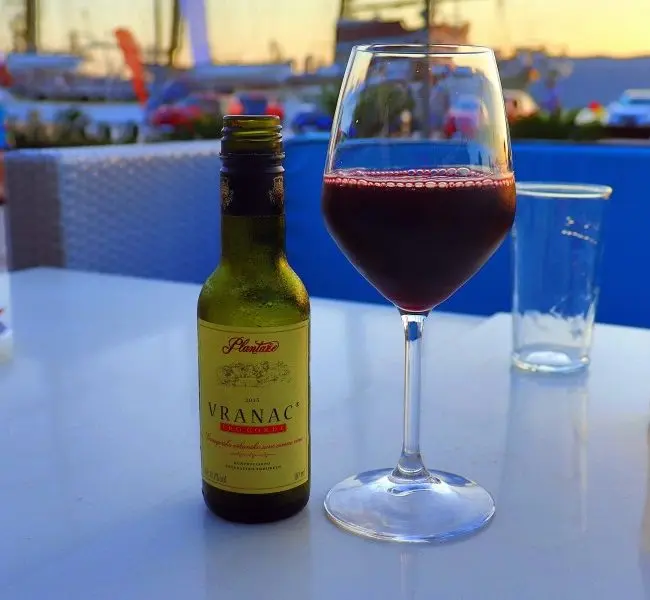
Famous brands
Vranac wines are popular both in Montenegro and abroad, and are considered a gastronomic landmark of the country. The largest producer in the industry is Plantaže, which owns the largest vineyards in Europe, their area is 2310 hectares. More than 70% of plantings are given under the variety Vranac. The assortment of the enterprise is dominated by table wines of the middle price segment, although premium-class products with a long aging period are also presented.
Popular types:
- Vranac, 13,3% – an inexpensive ruby-colored wine made from grapes grown in the Skadar Lake region. A drink with the aroma of berries, red fruits and spices, blackberry dominates in taste, moderate acidity and tannins;
- Vranac Pro Corde, 15% is a maroon premium wine with an aromatic bouquet of prunes and cherries combined with spices. The taste is well balanced, pronounced fruit notes are successfully complemented by coffee and vanilla tones. Aged for at least 4 years;
- Vranac Reserve, 14,7% – belongs to the ultra-premium class and is produced in the years of the best harvests, the aging period is 5 years. The color of the drink is dark red, the aroma is dominated by wild berries. The taste is rich, in the foreground are fruits, to which vanilla, coffee, tobacco and dried figs are added.
- Plantaže is the largest exporter of Montenegro and sells its products to 44 countries of the world, including Russia. The manufacturer’s wines can be purchased at wine boutiques selling premium foreign alcohol.
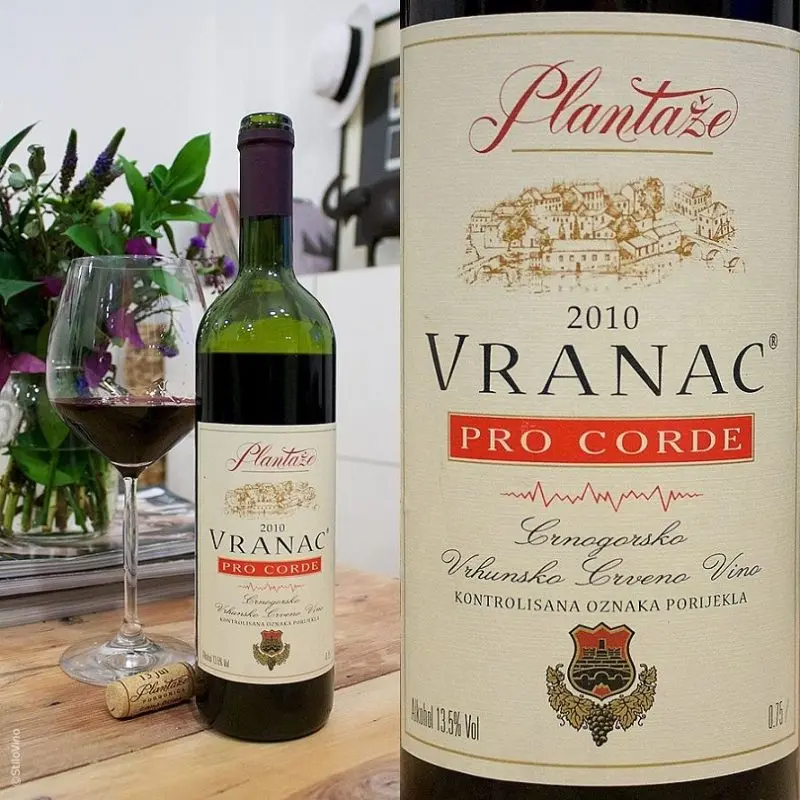
Noteworthy samples of Vranac wines from other Eastern Europe:
- Tvrdoš Monastery Vranac, 13,5% is the flagship brand of the monastery winery Tvrdosh, located in the Trebinje Valley in Eastern Herzegovina. A wine with high acidity and the taste of a freshly baked berry pie. The monks purchase barrels for aging in France and burn them from the inside to give the drinks a slightly smoked tint;
- Brušani Vranec Barrique, 15% – produces a family winery in northern Macedonia. The owner of the enterprise is a big fan of Lebanese wines, so his Vranac is distinguished by a high content of tannic notes and pronounced shades of chocolate, prunes, leather and vanilla;
- Aleksić Armanet Vranac, 15% – produced by a winery in the south of Serbia, Macedonian grapes serve as raw materials. Spicy wine with plum, cherry, chocolate, raisin and spice flavors.
How to drink Vranac wine
Vranac is combined with red meat, venison, mature cheeses. In Montenegro, wine is traditionally served with Negush prosciutto, a dry-cured ham made in the village of Negushi, as well as with smoked carp and all types of grilled roasts.
Premium varieties make a gastronomic pair with steak, pork, smoked meat and chocolate desserts. Serving temperature – 18–20 ° С.
